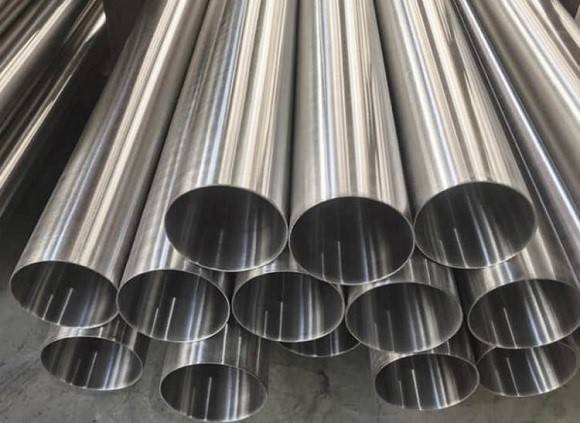Stainless steel seamless pipe is a long strip of steel with a hollow section and no seams around it. The thicker the wall thickness of the stainless steel seamless pipe, the more economical and practical it is, and the thinner the wall thickness, the higher its processing cost will be. Stainless steel seamless pipes are very similar to cs seamless pipes in appearance, and they need to be identified when they are used
Identification of stainless steel seamless pipe
1. Magnetic test
The magnetic test is the easiest way to distinguish annealed austenitic stainless steel from ferritic stainless steel. Austenitic stainless steel is non-material magnetic steel, but after cold working under atmospheric pressure, it will have a slight magnetism, but pure chromium stainless steel and low alloy stainless steel are all strong magnetic steel.
2. Nitric acid point test
A notable feature of stainless steel pipe is its inherent corrosion resistance to concentrated nitric acid and dilute nitric acid. This property distinguishes it easily from most other metals or alloys. However, the high-carbon 420 and 440 pile-based acoustic pipes are slightly corroded during the production of nitric acid point test, and some non-ferrous metal enterprises will be corroded by society when they encounter concentrated nitric acid. Thin-wall stainless steel is highly corrosive to carbon steel.

3. Copper sulfate point test
The copper sulphate point test is a quick and easy calculation to distinguish between a plain carbon steel and a double-flange steel expansion joint of all data types. The concentration of the copper sulfate solution used is 5-10%.
Before conducting the point test, the test area should thoroughly and effectively remove the grease or various impurities on the surface of the 304 stainless steel tube concrete, and polish one or a small area with a soft abrasive cloth. Then use a drop bottle to control the instillation of copper sulfate solution to the cleaned area. Ordinary carbon steel or iron will form a layer of metallic copper in a few seconds, while the surface of the double flange steel expansion joint will not produce copper deposits or show the color of copper.
Identification of stainless steel seamless pipe
1. Magnetic test
The magnetic test is the easiest way to distinguish annealed austenitic stainless steel from ferritic stainless steel. Austenitic stainless steel is non-material magnetic steel, but after cold working under atmospheric pressure, it will have a slight magnetism, but pure chromium stainless steel and low alloy stainless steel are all strong magnetic steel.
2. Nitric acid point test
A notable feature of stainless steel pipe is its inherent corrosion resistance to concentrated nitric acid and dilute nitric acid. This property distinguishes it easily from most other metals or alloys. However, the high-carbon 420 and 440 pile-based acoustic pipes are slightly corroded during the production of nitric acid point test, and some non-ferrous metal enterprises will be corroded by society when they encounter concentrated nitric acid. Thin-wall stainless steel is highly corrosive to carbon steel.

3. Copper sulfate point test
The copper sulphate point test is a quick and easy calculation to distinguish between a plain carbon steel and a double-flange steel expansion joint of all data types. The concentration of the copper sulfate solution used is 5-10%.
Before conducting the point test, the test area should thoroughly and effectively remove the grease or various impurities on the surface of the 304 stainless steel tube concrete, and polish one or a small area with a soft abrasive cloth. Then use a drop bottle to control the instillation of copper sulfate solution to the cleaned area. Ordinary carbon steel or iron will form a layer of metallic copper in a few seconds, while the surface of the double flange steel expansion joint will not produce copper deposits or show the color of copper.









